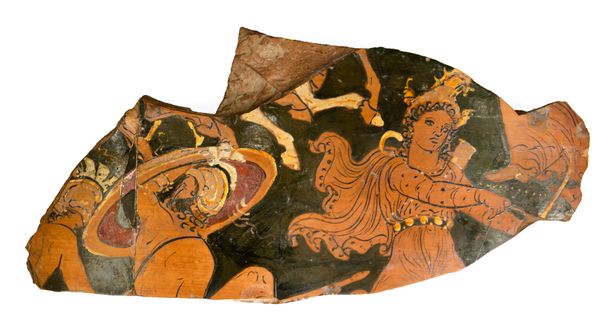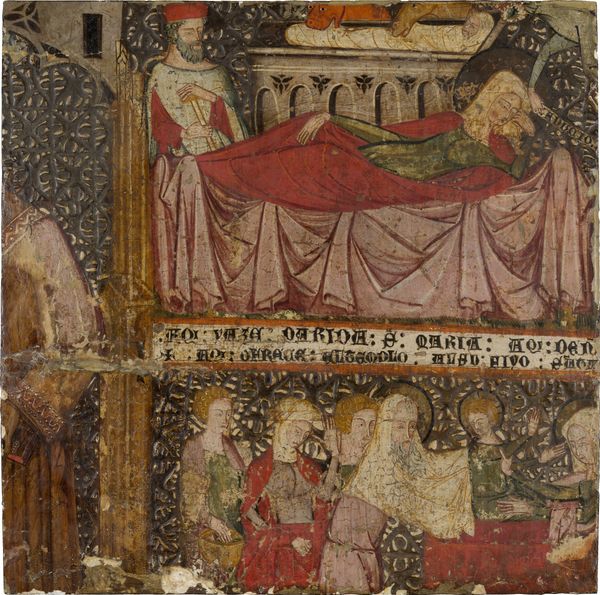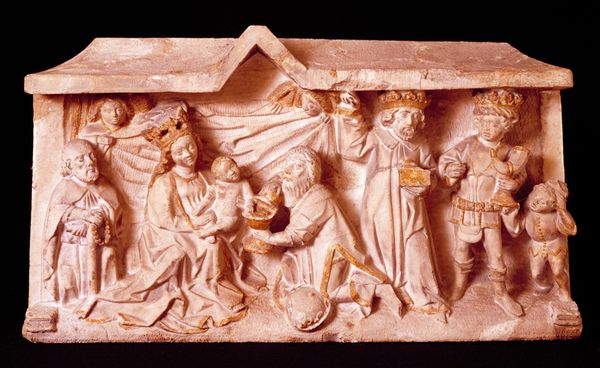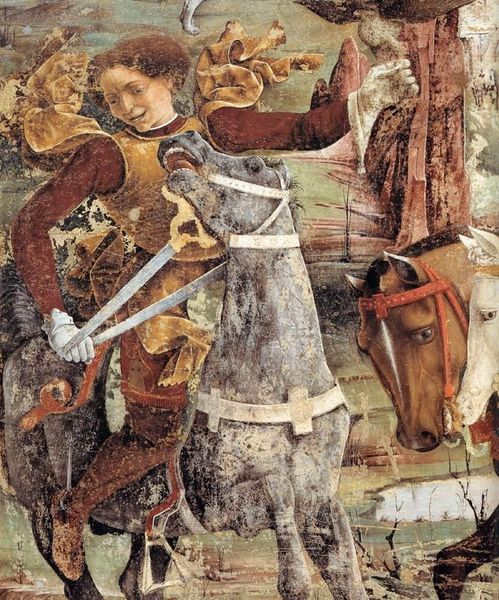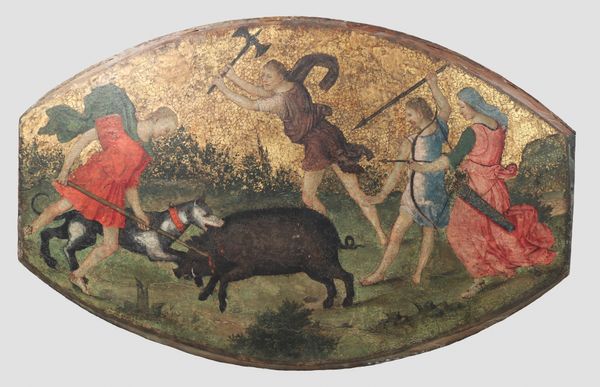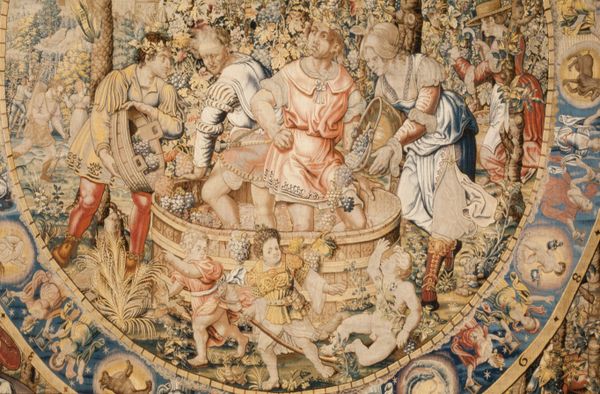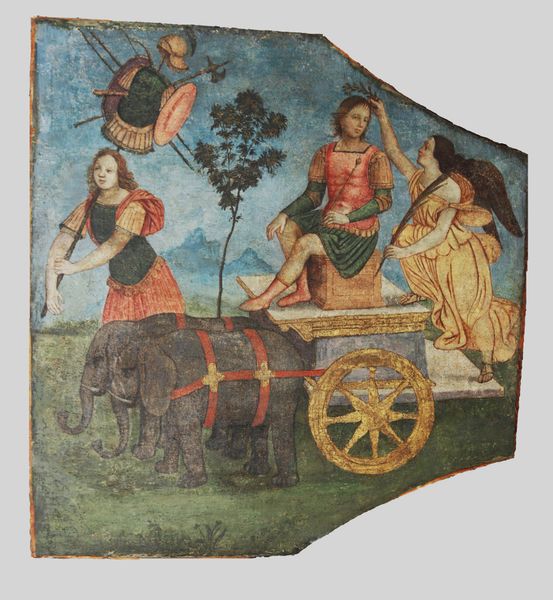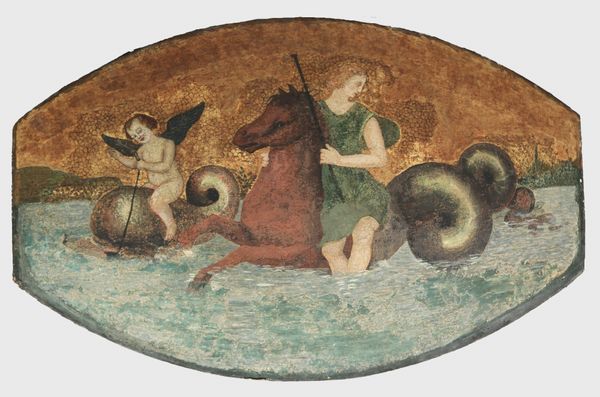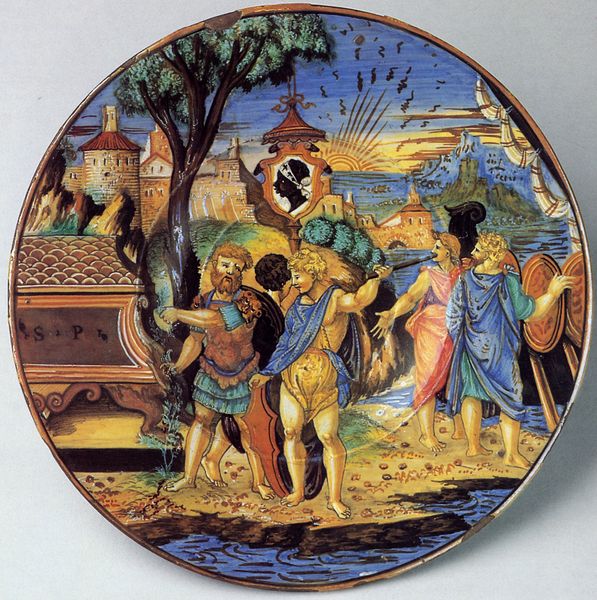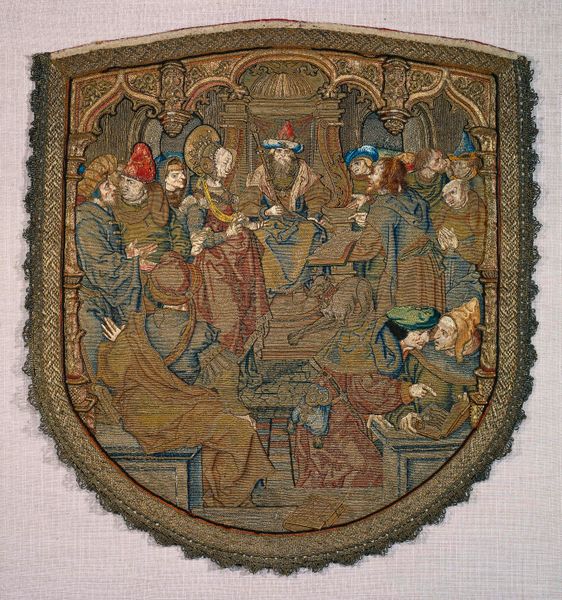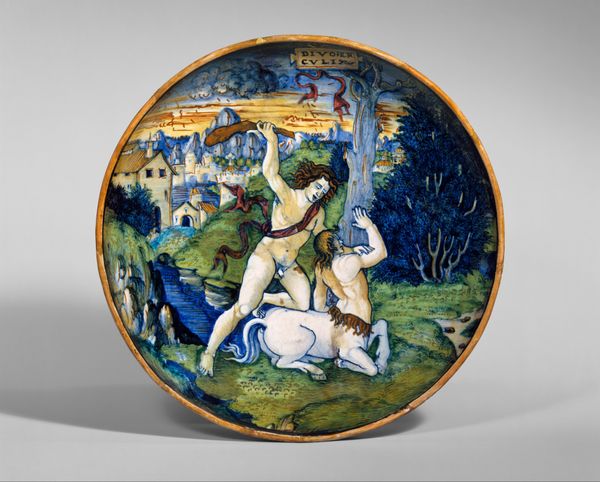
panel, tempera, painting
#
panel
#
allegory
#
narrative-art
#
tempera
#
painting
#
landscape
#
perspective
#
figuration
#
oil painting
#
classicism
#
genre-painting
#
academic-art
#
italian-renaissance
#
early-renaissance
#
mixed media
#
miniature
Copyright: Public domain
Curator: We’re standing before “Trionfo Dell'amore," attributed to Lo Scheggia, rendered in tempera on panel. What’s your immediate response? Editor: It feels like a fairytale tableau. A grand procession but contained and… precariously balanced within this rounded form. It’s quite dreamlike. Curator: Yes, its intimate scale suggests its likely function as part of the decoration for a domestic interior, perhaps adorning a piece of furniture like a “cassone,” or wedding chest, in Renaissance Italy. The imagery suggests that these were part of wedding celebration. Editor: So, not meant for a vast gallery then, but a personal space. The composition feels intentional given the round surface. I like the juxtaposition of love as a powerful force of nature against the domestic intimacy of its presentation. Does it amplify or diminish its power? Curator: A very good point. In Italian Renaissance art, cassone panels, like this one, presented both classical and contemporary scenes depicting themes relevant to marriage and domestic life, thus these celebrations were public, legal, economic and symbolic. Editor: Looking closely, I’m fascinated by Cupid wielding his bow above what I can only presume is an alter for burnt offerings. The potential for violence disguised within a scene of opulent love. There is such a duality. How do you see that violence manifest in society reflected here? Curator: The courtly love tradition certainly cloaked societal power structures, and works such as these are useful in that they open paths to study the patronage networks and systems of production, and of how such concepts reflected the family dynamics, wealth, and expectations of women’s duties. It served as didactic imagery in essence, presenting idealized yet fundamentally unattainable forms of life. Editor: The figures feel stylized. Look at the horses for example. Their movement seems almost staged, lacking any raw, vital energy, despite the lively theme of Cupid's triumph. The clothing is much more the focus of this, serving wealth display functions. What if the scene lacks authenticity and that the celebration in marriage itself may have been a gilded cage? Curator: Exactly, it becomes fascinating to question these visual displays. What meanings were embedded for contemporary audiences, and what are the receptions and functions it plays for us in current dialogues and readings? Editor: Absolutely. I think bringing this lens to older artworks creates vibrant, contemporary relevance for ongoing discussions about how patriarchy, class, and expectations of beauty shaped gender roles, and societal hierarchies still resonating now. Curator: An essential understanding—thank you.
Comments
No comments
Be the first to comment and join the conversation on the ultimate creative platform.

